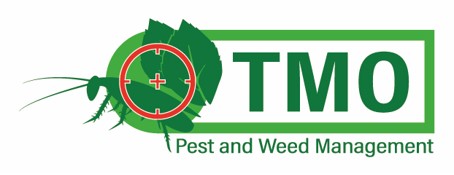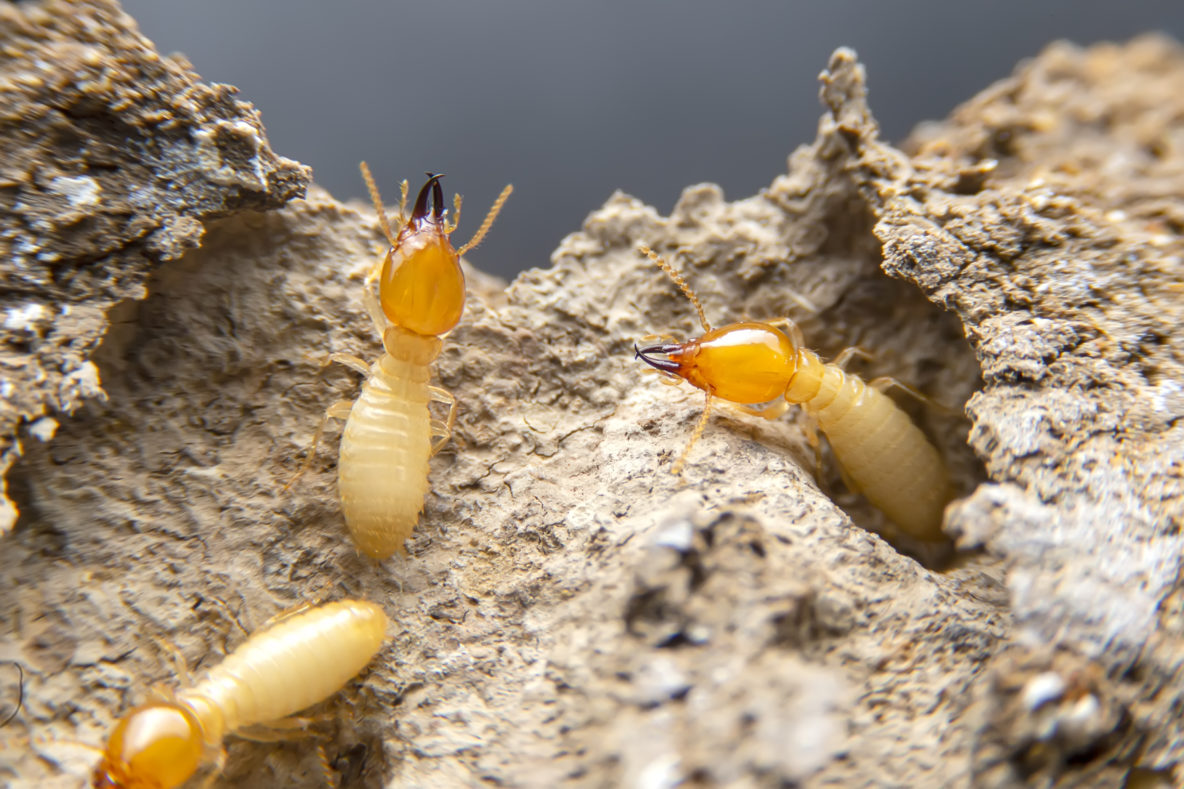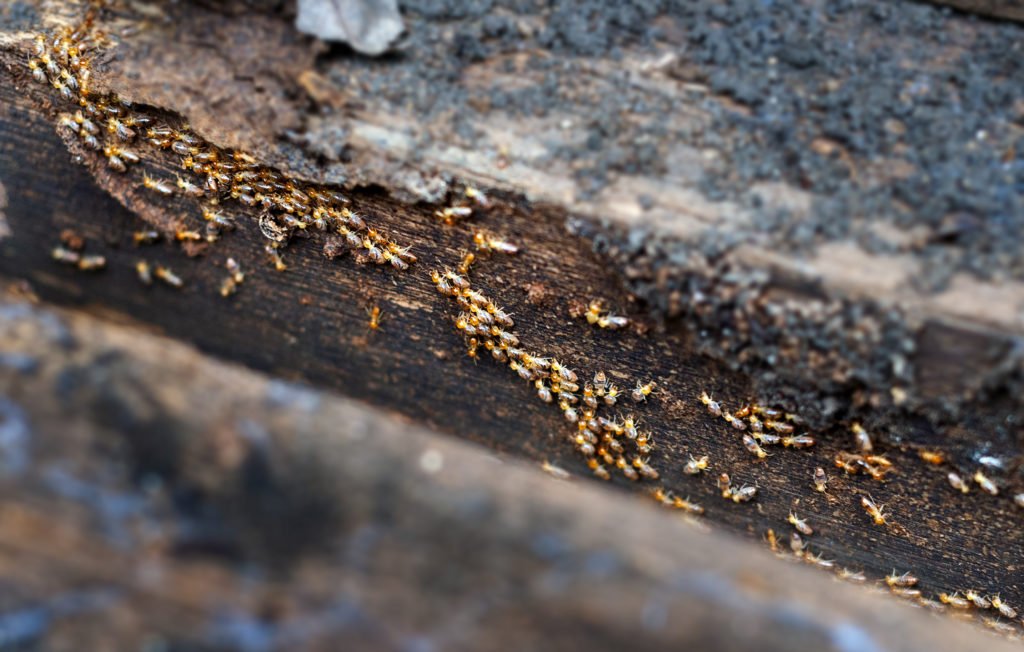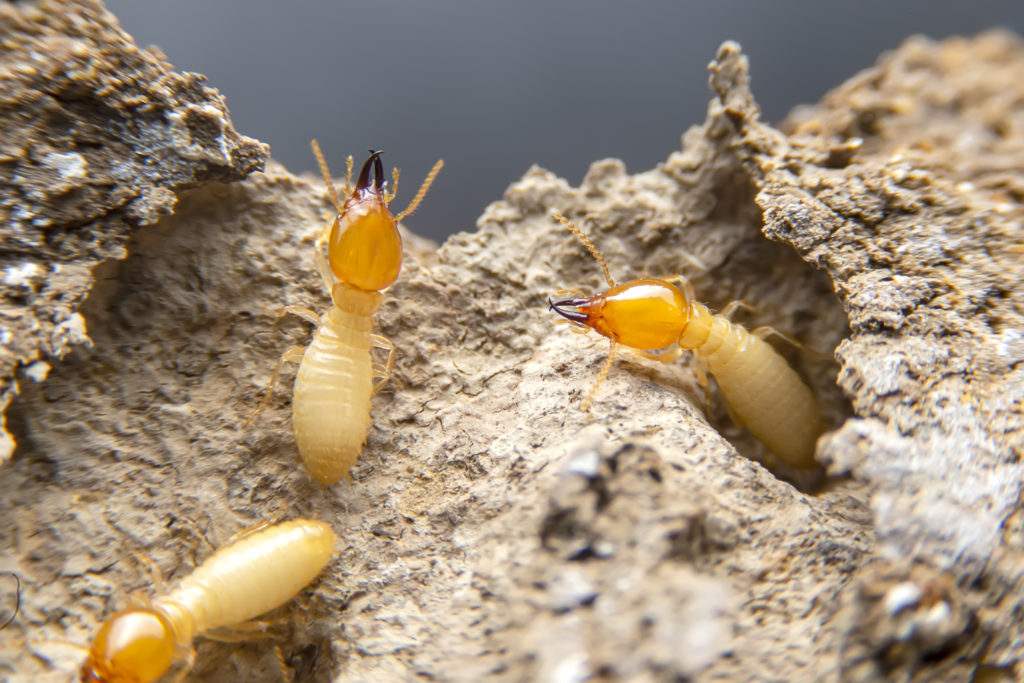How to spot a termite infestation. Termites cause hundreds of millions of dollars of property damage across Australia every year, feasting on timber structures while racking up serious repair bills for home and business owners.
While the termites themselves can be hard to spot, they often leave behind a number of telltale signs to help you spot their presence. Should you spot any of the following, we suggest you seek expert help from professional pest control specialists who will provide a long-lasting, effective treatment.
Six key signs of a termite infestation
Swarmers and discarded wings
Flying termites (aka “swarmers”) are usually the first signs of an infestation, emerging from the nest in large groups either to find a suitable mate or a larger home. Some termite species swarm at night and are attracted to light, while others swarm in the day (particularly after heavy rainfall).
Once swarmers land in their desired destination, they twist off their wings as they’re no longer needed. The discarded wings are usually found near common home-access points, for example, next to windows or doors, or around your property’s foundation.
Mud tunnels
Subterranean termites create mud tubes as they travel through soil to get to food sources, offering protection and humidity to help the termites thrive. Commonly found near building foundations, the pencil-sized mud tubes are made from a combination of soil and termite droppings and are easy to spot with the naked eye.
You can help avoid attracting termites by eliminating moisture-rich environments, and storing any firewood, mulch, or wood chips away from your home.
Cracked, hollowed, or blistered wood
Termites consume wood from the inside out, leaving behind just a thin veneer of timber. You can spot signs of termite damage through blistered or cracked furniture, skirting boards, floorboards, or timber structural supports—or by tapping on the affected areas to check for a hollow sound.
You may also notice termites through unexplained cracks in the walls—evidence of these timber-hungry pests consuming the cellulose within your walls.
Noise
Termites are sensitive to noise and vibrations, using several organs at the base of their antennae and on the tibia (one of the segments of the leg) to communicate between the colony. If you can hear a quiet, clicking sound coming from the walls, it’s likely soldier termites banging their heads against the wood, signalling danger to the rest of the colony.
Frass (termite droppings)
Often confused with sawdust, frass is the wood-coloured droppings from dry wood termites. Unlike subterranean termites who use their droppings to create mud tubes, dry wood termites push it out of small holes near the entrances to their nest, leaving behind black marks and a dark powdery substance around any infested areas.
Hard to open windows or doors
The final sign of a termite infestation often gets mistaken for damp and hot weather: stiff windows and warped doors. When eating and tunneling through doors and window frames, termites produce moisture, causing the wood to warp, and therefore making them tough to open.
What to do if you find termites
How to spot a termite infestation, don’t panic. Avoid the temptation to try and treat them yourself as the termites may feel the disruption and relocate to another spot in your house. Instead, seal up their workings with tape (to prevent light access) and then seek professional help from a termite control specialist.
Our team here at TMO Pest Control Perth are experts in timber pest control and will always work to find the fastest, most effective treatment plan for your termite infestation.
To prevent future damage, we suggest an annual termite inspection to catch issues early. We also suggest completing a pre-purchase timber pest inspection before buying a new property.
For any termite infestation, contact our helpful team today to find out about our termite barrier and termite bait station solutions!



